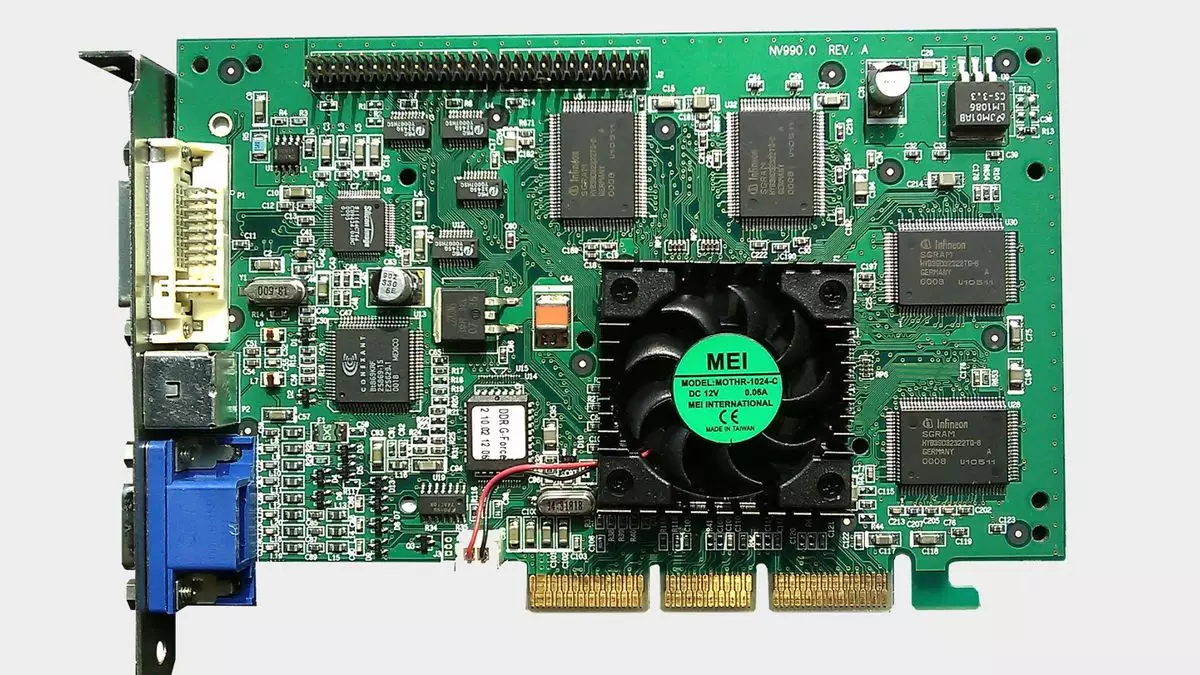The landscape of personal computing has transformed drastically since the late 90s, particularly in the gaming sector. As we mark the 25th anniversary of a groundbreaking piece of technology, the Nvidia GeForce 256, it’s essential to take a moment to reflect on its historical significance. Released on October 11, 1999, the GeForce 256 was not merely another graphics card; it represented a pivotal moment in the evolution of graphics processing. Despite its modest specifications compared to today’s colossal graphics processors, it ignited a revolution that has profoundly influenced gaming.
Before the introduction of the GeForce 256, the term “GPU” — or Graphics Processing Unit — had not gained widespread acceptance. While some enthusiasts might argue that 3dfx’s Voodoo series or even the PlayStation 1 utilized similar technology, Nvidia’s decision to market the GeForce 256 as the first true GPU set a new standard. With 32 MB of memory and a clock speed of 120 MHz, the GeForce 256 was a formidable contender on the market.
Technological Breakthroughs
One of the most notable features of the GeForce 256 was its onboard hardware transform and lighting (T&L) capabilities. This marked a significant shift in rendering processes, transferring the CPU’s burden of rendering graphics to the GPU. By doing so, the GeForce 256 enabled more complex calculations and higher polygon counts, laying the groundwork for the immersive 3D environments we enjoy today.
The core architecture, dubbed the NV10, utilized a 256-bit QuadPipe Rendering Engine which consisted of four 64-bit pixel pipelines. This design provided a fill rate of up to 480 Mpix/sec, a remarkable achievement at that time. The capabilities of the GeForce 256 allowed it to outperform competitors like the Voodoo3 3500 and RIVA TNT2 Ultra by as much as 50% in T&L-enabled games. It was a technological marvel skilled at handling the increasingly demanding graphic workloads of popular games emerging during that era.
The gaming environment in late 1999 was teeming with excitement and innovation. This period gave birth to iconic titles such as Unreal Tournament and Quake III Arena, both of which were released just weeks after the GeForce 256 hit the market. These games represented a leap forward in multiplayer experiences, capturing the thrill of competitive gameplay that millions would come to adore. The arrival of the GeForce 256 coincided perfectly with this burgeoning culture, allowing gamers to fully experience the design ambitions of deep, richly detailed games.
The nostalgia surrounding hardware from this era is palpable. Many of us recall the exhilaration of unboxing our new GPUs and the audible hum of diminutive fans whirring into action. While the components of today may boast unprecedented power and capabilities, there is a certain charm to the simplicity and effectiveness of early graphics cards like the GeForce 256.
Modern graphics offerings, exemplified by Nvidia’s RTX 4090, display the astonishing advancements in technology over the past quarter-century. A mere 17 million transistors now pales in comparison to the staggering 76 billion found in current-gen GPUs. It serves as a reminder of just how swiftly technology evolves and reshapes our expectations.
Moreover, looking at the power consumption metrics—13/12 W TDP of the GeForce 256 versus the far more demanding requirements of contemporary GPUs—puts the evolution of efficiency into perspective. What was once considered cutting-edge technology now serves as a charming relic of the past.
A Fond Farewell to a Pioneer
As we commemorate the 25th birthday of the GeForce 256, it’s essential to celebrate not only the card itself but also what it represents: a foundation upon which modern gaming has been built. It would not be surprising if hidden in attics and garages across the world, old GeForce 256 cards await revival. They remind us of simpler times when each frame rendered carried with it unfiltered joy and excitement.
There’s something poetic about recognizing the importance of the GeForce 256 today. Perhaps all it needs is a little dusting off and a special place in our memories—and maybe even our homes. So here’s to you, GeForce 256. You truly changed the game, often without any fanfare. Today, we look back fondly and acknowledge that we indeed didn’t grasp at the time how good we had it.

